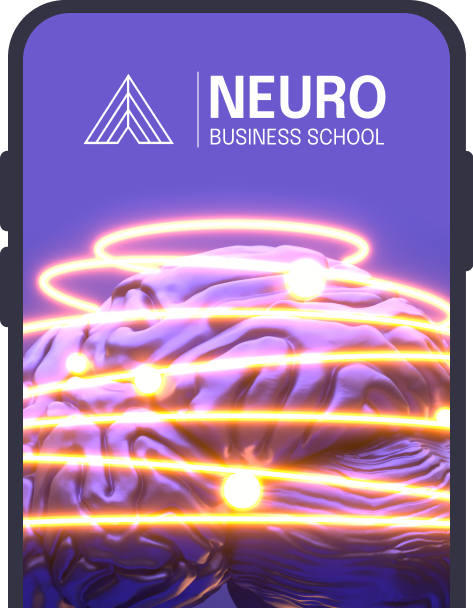Did you know that our brain makes purchasing decisions in less than 3 seconds? Yes, as you read, and that’s why selling logic doesn’t always work. It’s our emotions that decide what we want or not (at least 92% of the time), so if you want to negotiate like an expert, you’ll have to employ sales techniques.
Only a few master the right sales strategies. That is, they know how to read brain signals, understand how to craft a value proposition, and are masters at transforming common objections like “no, I’m not interested” into “yes, I want this product,” leaving many wondering, how do you achieve that?
It’s not magic, nor is it a trick; it’s a good understanding of sales techniques; and an irresistible value proposition capable of selling you something before you even realize you’ve bought it. Are you up for learning how to sell like an expert?
What are sales techniques?
Getting into the nitty-gritty, these are strategies designed to attract customers, sell more, retain them, or open up new business opportunities. Once you implement them, you’ll skyrocket your business.
Sales techniques are based on consumer psychology, as they are created with the idea of guiding, persuading, and concretizing the sales process without “manipulating” them, allowing them to make decisions more quickly and with the least amount of stress possible.
4 Effective and Proven Sales Techniques
There’s no single foolproof sales technique, as there are several that can be applied to any niche and need. However, these four stand out for their results:
1. Storytelling
Storytelling is a strategy that tells stories that capture attention and bring potential customers closer to your brand, creating a connection that facilitates the sale without directly selling to them.
It involves creating a character, describing the setting, developing a conflict, and defining the message you want to convey, directing it toward an action that is usually a sale.
Good storytelling captivates, humanizes the brand, and actually increases sales. An example of this is Nike, which doesn’t sell sneakers for athletes, but rather sells a product for the “athlete in you,” and, as a result, generated $51.22 billion in sales in 2023.
2. SPIN method
Created by Neil Rackham, known as the father of consultative selling, it involves asking the customer specific questions to identify their needs and offering benefits based on them.
SPIN stands for Situation, Problem, Inquiry, and Need and is applied as follows:
- Situation: Generally, the customer is asked about their lifestyle and goals to create a connection during the conversation.
- Problem: With the information received, an analysis is made of what aspects the customer would like to change or what could improve their situation, in order to address or relate them to what you want to offer.
- Implication: The potential customer is explained what they would be missing out on if they don’t act and take advantage of what you are offering.
- Benefit: Finally, questions are asked that direct them to the solution that your product or service offers.
3. Sandler Method
Although it was born in the 1960s, the Sandler method is still a strategy that shortens the B2B sales cycle. Instead of a pitch about your product or service, you guide your potential client to self-discover their needs through questions.
A conversation that kick-starts this sales technique would be something like: Hello, how are you? My name is… I’ve seen companies in your industry whose biggest concern is wasting hours in unproductive meetings or duplicating tasks.
Is this a concern you also have? If the client answers yes, you explain how your service or product saved company time or resources, offering to improve their processes, statistics, etc.
4. Challenger Sale
This sales technique, created by Brent Adamson and Matthew Dixon in 2011, consists of educating the client, showing them things they hadn’t considered, challenging their current way of thinking, and controlling the conversation by showing them what their current problem is instead of asking them. This strategy is especially useful because it offers valuable insights to the customer in addition to offering them a product or service, and it is often especially effective when faced with a complex sale.
How sales techniques help your business
There are many reasons why you’ll want to take sales techniques courses from now on and implement all the available strategies. These strategies will help you better understand your customers, build better relationships, and distinguish yourself from the competition. You’ll also:
✅Create personalized strategies that allow you to make better use of your resources.
✅Adapt your sales methods to different types of customers.
✅Have effective sales closings, where you’ll become a master at responding to common or complex objections.
✅You’ll build customer loyalty, because every good sales experience encourages them to buy from you and become an ambassador for your brand.
✅You’ll increase your conversion rates and, therefore, boost your revenue.
✅You’ll be able to adapt to changes or trends in your niche and to any changes that may arise in your consumers’ behavior.
What sales techniques no longer work?
- Cold calling: Calls that were once a huge success are no longer as useful because 90% of people ignore calls from numbers they don’t recognize (LinkedIn data).
- Lying about what you offer: 91% of customers, according to a PwC study, tend to share their experiences on social media, resulting in bad reviews, a poor reputation, and fewer sales for your business if you lie.
- Pushing and pushing hard sells: Customer rejection is something you shouldn’t ignore because forcing the sale generates fear, mistrust, and stress, and causes interested parties to decline the offer (Harvard Business Review data).
- Standard pitch: A pre-established pitch is ineffective because it feels mechanical and dehumanizing, and the customer feels ignored. An analysis by McKinsey & Company showed that companies that focus on personalization generate 40% more sales, increasing conversion rates by up to 15%.
Where can I take a sales technique course?
After everything you’ve read, you’ll surely want to learn more about how to get a customer to say “I want it NOW!” And for this, sales techniques courses are the foundation of everything.
At Neuro Business School, we teach you how to turn psychology into your best ally to sell more and better. With our Bachelor’s Degree in Neuromarketing, you’ll learn to create strategies to connect with every type of consumer, create irresistible campaigns, understand how emotions work in purchasing, and know how to design messages that activate dopamine (yes, the desire hormone).
If you’re looking to go further, in our Master’s in Neuromarketing, you’ll gain all the tools to analyze brain data, master the use of AI and advanced techniques to optimize high-impact campaigns, predict trends, and design strategies used by giants like Apple and Coca-Cola.
Frequently asked questions
Do sales techniques really work?
They really do, as long as you apply them properly and without stressing people out. The best thing is to highlight your benefits without overwhelming your customers.
What’s the most effective sales technique for beginners?
Without a doubt, active listening, as it helps you understand the customer’s real needs (without interrupting) and offer specific solutions, which increases the likelihood of closing. Combine it with open-ended questions like “What problem are you looking to solve?” to guide the conversation.
How to close a sale successfully without seeming pushy?
The key is to detect signs of interest (such as repetitive questions or thoughtful silences) and use a gentle closing: “Based on what you’ve told me, this solution seems to fit your needs. Would you like to try it, or would you prefer we clarify anything further?” This gives the customer control without pressure.




